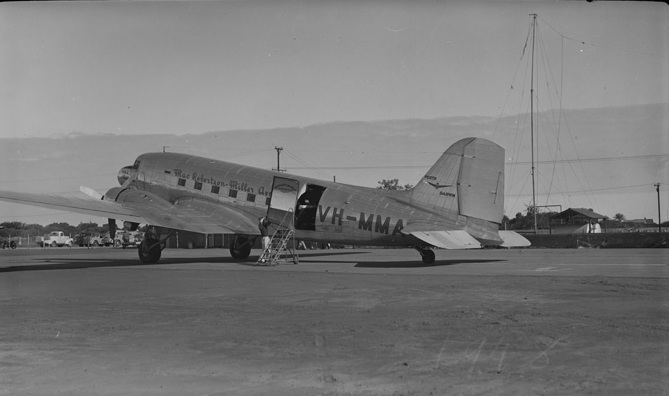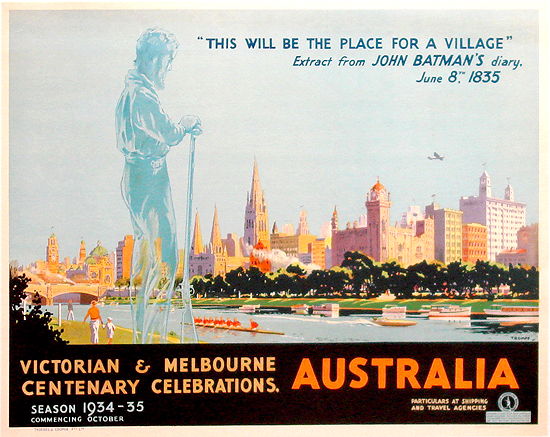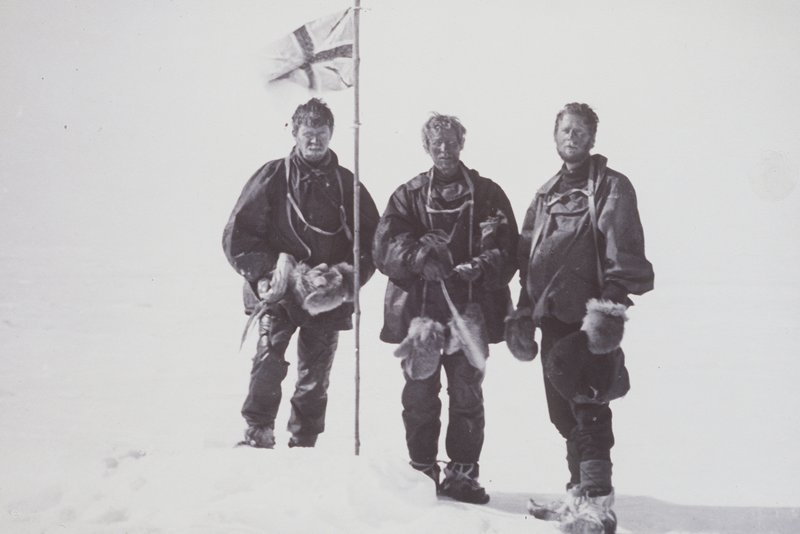|
Macpherson Robertson
Sir Macpherson Robertson KBE (6 September 185920 August 1945) was an Australian philanthropist, entrepreneur and founder of chocolate and confectionery company ''MacRobertson's''. He was also known for bringing the United States inventions of chewing gum and cotton candy (known in Australia as fairy floss) to Australia. Early life Macpherson Robertson was born in Ballarat, Victoria. He was the eldest of seven children of Macpherson David Robertson, a Scottish carpenter born in Uruguay, and his Irish wife, Margaret (née Browne). The family came to Ballarat in search of gold but fell on hard times, with the father abandoning them and moving to Fiji. In 1869, his mother returned to Leith, in Scotland, together with Macpherson, his three siblings and another child on the way. In Scotland, at the age of nine, Macpherson started working to support the family, eventually taking an apprenticeship with the Victoria Confectionery Co. In 1874, the family returned to Australia at the r ... [...More Info...] [...Related Items...] OR: [Wikipedia] [Google] [Baidu] |
MacRobertson Miller Airlines
MacRobertson Miller Airlines (MMA) was a Western Australian airline that operated between 1927 and 1993. After being purchased by Ansett Transport Industries in 1968, it was eventually rebranded Ansett WA. History In 1919, Horrie Miller purchased an Armstrong Whitworth F.K.8 from the United Kingdom and launched the Commercial Aviation Company, in Rochester, Victoria. On 8 October 1920, he registered the Commercial Aviation Company. In 1927, the Commercial Aviation Company commenced weekly Adelaide to Mount Gambier services with an Airco DH.9.MacRobertson Miller Airlines Air Force Association (Western Australian Division) During May 1928, in partnership with the backing of chocolate millionaire |
Royal Botanic Gardens, Melbourne
Royal Botanic Gardens Victoria are botanic gardens across two sites–Melbourne and Cranbourne. Melbourne Gardens was founded in 1846 when land was reserved on the south side of the Yarra River for a new botanic garden. It extends across that slope to the river with trees, garden beds, lakes and lawns. It displays almost 50,000 individual plants representing 8,500 different species. These are displayed in 30 living plant collections. Cranbourne Gardens was established in 1970 when land was acquired by the Gardens on Melbourne's south-eastern urban fringe for the purpose of establishing a garden dedicated to Australian plants. A generally wild site that is significant for biodiversity conservation, it opened to the public in 1989. On the site, visitors can explore native bushland, heathlands, wetlands and woodlands. One of the features of Cranbourne is the Australian Garden, which celebrates Australian landscapes and flora through the display of approximately 170,000 plan ... [...More Info...] [...Related Items...] OR: [Wikipedia] [Google] [Baidu] |
Herbarium
A herbarium (plural: herbaria) is a collection of preserved plant specimens and associated data used for scientific study. The specimens may be whole plants or plant parts; these will usually be in dried form mounted on a sheet of paper (called ''exsiccatum'', plur. ''exsiccata'') but, depending upon the material, may also be stored in boxes or kept in alcohol or other preservative. The specimens in a herbarium are often used as reference material in describing plant taxa; some specimens may be types. The same term is often used in mycology to describe an equivalent collection of preserved fungi, otherwise known as a fungarium. A xylarium is a herbarium specialising in specimens of wood. The term hortorium (as in the Liberty Hyde Bailey Hortorium) has occasionally been applied to a herbarium specialising in preserving material of horticultural origin. History The making of herbaria is an ancient phenomenon, at least six centuries old, although the techniques have changed l ... [...More Info...] [...Related Items...] OR: [Wikipedia] [Google] [Baidu] |
Shrine Of Remembrance
The Shrine of Remembrance (commonly referred to as The Shrine) is a war memorial in Melbourne, Victoria, Australia, located in Kings Domain on St Kilda Road. It was built to honour the men and women of Victoria who served in World War I, but now functions as a memorial to all Australians who have served in any war. It is a site of annual observances for Anzac Day (25 April) and Remembrance Day (11 November), and is one of the largest war memorials in Australia. Designed by architects Phillip Hudson and James Wardrop, both World War I veterans, the Shrine is in classical style, based on the Tomb of Mausolus at Halicarnassus and the Parthenon in Athens, Greece. The crowning element at the top of the ziggurat roof references the Choragic Monument of Lysicrates. Built from Tynong granite, the Shrine originally consisted only of the central sanctuary surrounded by the ambulatory. The sanctuary contains the marble Stone of Remembrance, upon which is engraved the words "Greater ... [...More Info...] [...Related Items...] OR: [Wikipedia] [Google] [Baidu] |
Yarra River
The Yarra River or historically, the Yarra Yarra River, (Kulin languages: ''Berrern'', ''Birr-arrung'', ''Bay-ray-rung'', ''Birarang'', ''Birrarung'', and ''Wongete'') is a perennial river in south-central Victoria, Australia. The lower stretches of the Yarra are where Victoria's state capital Melbourne was established in 1835, and today metropolitan Greater Melbourne dominates and influences the landscape of its lower reaches. From its source in the Yarra Ranges, it flows west through the Yarra Valley which opens out into plains as it winds its way through Greater Melbourne before emptying into Hobsons Bay in northernmost Port Phillip Bay. The river has been a major food source and meeting place for Indigenous Australians for thousands of years. Shortly after the arrival of European settlers, land clearing forced the remaining Wurundjeri people into neighbouring territories and away from the river. Originally called ''Birrarung'' by the Wurundjeri, the current name was mis ... [...More Info...] [...Related Items...] OR: [Wikipedia] [Google] [Baidu] |
MacRobertson Bridge
The MacRobertson Bridge is a road bridge that carries Grange Road from Toorak on the south bank into Burnley, over the Yarra River and the Monash Freeway in Melbourne, Victoria, Australia. The first river crossing at the site was Twickenham Ferry, which conveyed passengers and was founded by waterman Jesse Barrow in 1880. it was named for the Twickenham Ferry in London. The ferry survived until 1934, when it was replaced by the MacRobertson Bridge, financed by Sir Macpherson Robertson. When built the bridge was one of two bridges in the world to be the first to use welded steel trusses. As built the bridge only spanned the Yarra, but in 1967 the South Eastern Arterial The Monash Freeway is a major urban freeway in Victoria, Australia, linking Melbourne's CBD to its south-eastern suburbs and beyond to the Gippsland region. It carries up to 180,000 vehicles per day and is one of Australia's busiest freeways. ... was built, running under the northernmost span. References ... [...More Info...] [...Related Items...] OR: [Wikipedia] [Google] [Baidu] |
August Rietmann
August Rietmann (1877–1951) was a Swiss-born Australian monumental mason, potter and sculptor also known as August Rietman. Biography August Walter Rietmann was born in Lustdorf, Bezirk Frauenfeld, Thurgau, Switzerland, on 8 June 1877 to parents Walt and Karolina (née Gutterer) and was baptised a Lutheran. He married Maria Frieda Ölschläger (1878–1942) of Baden Baden, Germany on 6 August 1910. After five years and during WW1 he and wife Frieda migrated on 8 August 1915 to Melbourne, sailing on the S.S. ''Osterley'' from Marseille. In 1917 they leased Box Cottage, Ormond previously occupied by market gardeners William and Elizabeth Box, residents there from 1868–1913. There they raised two children, Stefanie (1918–2006) and William (1920–1997). In 1935 Rietmann purchased the property and the family used the Cottage during the day and slept in the Front House. He applied for naturalisation as an Australian citizen in October 1939. Sculptor From the date of his a ... [...More Info...] [...Related Items...] OR: [Wikipedia] [Google] [Baidu] |
Melbourne Centenary
The Melbourne Centenary was a 1934 centennial celebration of the founding of the city of Melbourne, Australia. As Victoria reeled from the severe economic and social fracturing of the Great Depression, its Centenary celebrated progress and community cohesion. Held between October 1934 and June 1935, the Centenary in fact celebrated two 'foundation' events, firstly commemorating Edward Henty's Portland settlement on 19 November 1834 as the first white settlement in what would later become the state of Victoria, then John Batman's pronouncement of the area upstream of the Yarra River as 'the place for a village', taken as the city's foundation, on 8 June 1835. John Batman was promoted as an heroic icon in an effort to embody the rewarding aspects of self-improvement, and was given more prominence as a founding father rather than John Pascoe Fawkner, whose advance party had in fact settled the site of the city where the Customs House is now located before Batman's party could ret ... [...More Info...] [...Related Items...] OR: [Wikipedia] [Google] [Baidu] |
Douglas Mawson
Sir Douglas Mawson OBE FRS FAA (5 May 1882 – 14 October 1958) was an Australian geologist, Antarctic explorer, and academic. Along with Roald Amundsen, Robert Falcon Scott, and Sir Ernest Shackleton, he was a key expedition leader during the Heroic Age of Antarctic Exploration. Mawson was born in England and came to Australia as an infant. He completed degrees in mining engineering and geology at the University of Sydney. In 1905 he was made a lecturer in petrology and mineralogy at the University of Adelaide. Mawson's first experience in the Antarctic came as a member of Shackleton's ''Nimrod'' Expedition (1907–1909), alongside his mentor Edgeworth David. They were part of the expedition's northern party, which became the first to attain the South Magnetic Pole and to climb Mount Erebus. After his participation in Shackleton's expedition, Mawson became the principal instigator of the Australasian Antarctic Expedition (1911–1914). The expedition explored thousand ... [...More Info...] [...Related Items...] OR: [Wikipedia] [Google] [Baidu] |
Antarctica
Antarctica () is Earth's southernmost and least-populated continent. Situated almost entirely south of the Antarctic Circle and surrounded by the Southern Ocean, it contains the geographic South Pole. Antarctica is the fifth-largest continent, being about 40% larger than Europe, and has an area of . Most of Antarctica is covered by the Antarctic ice sheet, with an average thickness of . Antarctica is, on average, the coldest, driest, and windiest of the continents, and it has the highest average elevation. It is mainly a polar desert, with annual precipitation of over along the coast and far less inland. About 70% of the world's freshwater reserves are frozen in Antarctica, which, if melted, would raise global sea levels by almost . Antarctica holds the record for the lowest measured temperature on Earth, . The coastal regions can reach temperatures over in summer. Native species of animals include mites, nematodes, penguins, seals and tardigrades. Where vegetation o ... [...More Info...] [...Related Items...] OR: [Wikipedia] [Google] [Baidu] |







